
7 minute read
The Way of the Tea
The Way of the Tea An Exploration of Japanese Tea Ceremonies
Words by Cory Rotolo
Advertisement
The first time I participated in a Japanese tea ceremony is something I can never forget. It was such an immersive, yet relaxing experience; it reminded me a lot of the flow state one enters when doing yoga or karate.
Steeped in tradition, perfected and refined throughout its several centuries of existence, Japanese tea ceremonies, or Sadō (literally translating to “the way of tea”), can provide you an unique experience like no other. It can be participated in as a form of self-discipline, self-improvement, or simply a form of relaxation. I’d like to encourage everyone to try otemae, the performance of a tea ceremony, at least once! There are three aspects to Sadō that lend themselves to its unique characteristics and give it its identity. I believe the more you know about these elements, the more enriching your experience can be. If you ever find the opportunity to join, here is my breakdown of the ceremony so you can get the most out of what Sadō has to offer!
During Japanese tea ceremonies, the etiquette of those performing the ceremony and the aesthetic design of the tea house are of equal importance. The tea house, and by extension its decorum, tries to avoid monotony as much as possible.
The Tea House

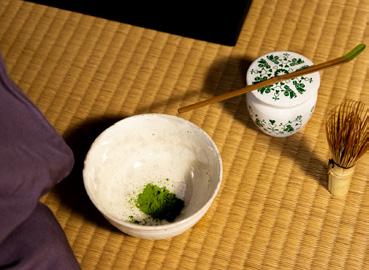
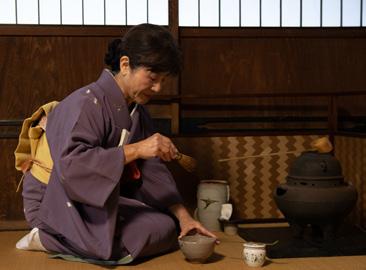

While a typical tea house may look sparse at first sight, a lot of thought and effort is put into the placement and design of the objects on display. Furniture is placed sparingly, yet imperfectly to replicate the randomness of nature. The idea here is to reward the participants for familiarizing themselves with the space.
For example, if you were designing a tea house and intended to display live flowers, then you should probably avoid a picture of flowers. Additionally, different colors and textures, and great craftsmanship are placed into each utensil to continually please the eyes. The color and glaze should also vary from each bowl and container used as to not create uniformity. This lack of uniformity in tandem with the room’s simplicity, provides an environment where the guest can become inspired, and project their imagination into the room. With that in mind not even two columns in the tea room should be made out of the same tree!
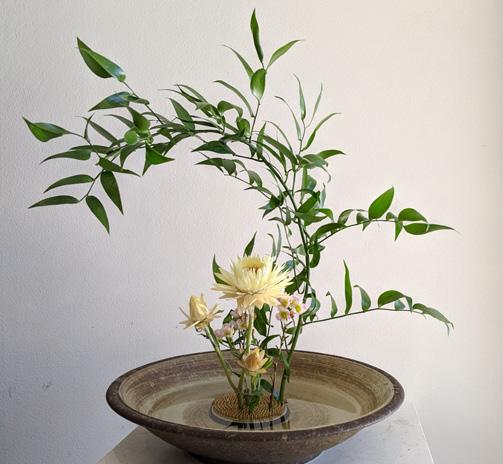
The Etiquette
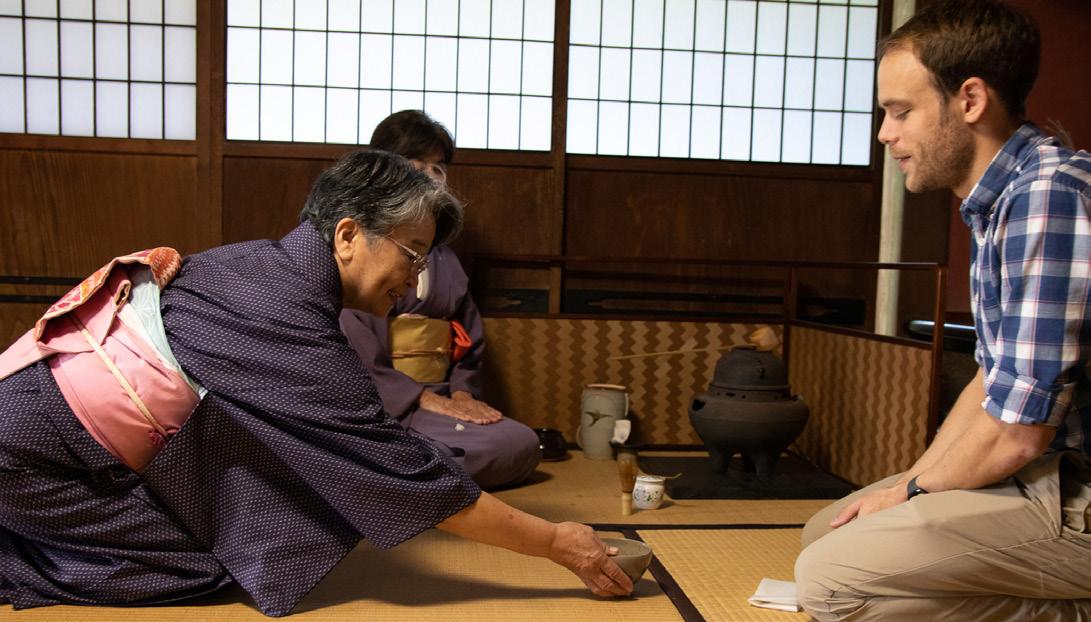
Rules and etiquette for Japanese tea ceremonies are generally strict. However, they were created to enhance the participants’ experience by making them aware of their surroundings. Every movement should remain fluid and efficient. When handling a bowl, one must move slowly and gently, avoiding any jagged movements. This structure complements the natural beauty that the tea house conveys. It is also done to show respect for the host and his/her utensils.
Many tea utensils are very rare, unique, and highly coveted. So, etiquette must be established on how to properly handle them. This etiquette is evident in nagori, a critical part of the tea ceremony, which gives criteria on how to properly show appreciation for any of the host’s tea utensils. These rules include holding the object a specific way, or raising the item to admire its construction and delicacy.
Despite the rigid guidelines, these strict rules give Sadō its simplicity. As a participant, since your movement is already predetermined, the only thing remaining for you to do is to observe and appreciate the ceremony. The Japanese Tea Experience
One of the coolest things about Sadō is how engaging it is. There is a response or feedback to every action carried out by its participants. This ritual manifests itself in the form of “little rewards” that stimulates all of the senses. Here’s how:
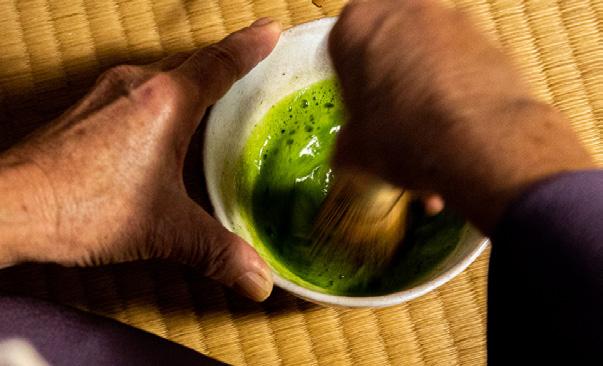
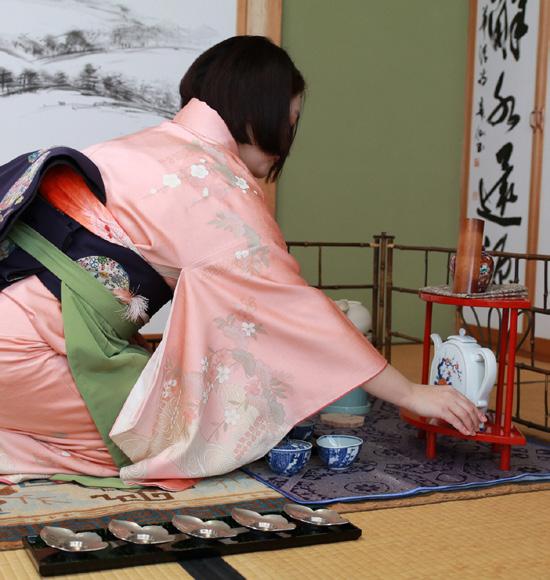
Guest’s sense of sight is instantly engaged upon setting into the garden surrounding the tea house. Guests are treated to the beauty of nature and the aesthetics of the exterior of the tea house. The host takes special care to arrange the garden, so it appears as natural as possible. The host may even go through the trouble of repositioning leaves along the path to the tea house for aesthetic pleasure. The interior of the modest structure (which I mentioned in the tea house section) also compliments the natural beauty of the garden outside. Upon first entering the tea room, a guest can admire all of the decorations the host used to adorn the room and later observe all of the craftsmanship of these items up close. Sounds Sound is another important element in the tea ceremony. The rustling of the trees in the garden, and the sound of flowing water is soothing and welcoming. Water sounds are a recurring theme in the ceremony. Guests are treated to the sound of boiling water in the hot water container or tetsubin. Additionally, there are also the sounds of pouring the water into the chawan tea bowl and waste water into the kensui rinse water receptacle along with the replenishing of the water in the tetsubin at the end of the ceremony.
Dialogue between host and guests are also taken into consideration, so the host will often select a beautiful scroll to hang up along with a flower arrangement to provide material for pleasant conversation. Other notable sounds include the satisfying tap of the tea scoop on the chawan and the sound of the final audible sipping of matcha tea. And of course, there is the silence. After all, sometimes hearing nothing at all is a pleasing sound.

The textures present in Sadō do much to enhance the experience. Before entering the tea room,guests usually wash their hands and face outside in a water basin. The cool water runs down their face and hands, helping to create a sense of renewal. Once inside the tea house, there are a myriad of textures to experience; the roughness of a bowl, or the glaze on a tea caddy all appeal to our sense of touch. Other unique textures include the texture of the tatami bamboo mat- and the smoothness of the bamboo utensils. Fragance A sense that is commonly overlooked is the sense of smell. Incense is used to constantly engage the guest. The art of burning incense has ancient roots and a good host will take care to select an appealing fragrance that is not too overpowering. And of course, the smell of matcha is also one of the defining elements of Sadō. Fragrance is such a simple yet crucial component of the ceremony. Flavors Lastly, we come to flavors. There is a broad range of tastes to experience. In most cases, matcha tea is the main component and traditionally served with wagashi, a treat made of mochi and fruits. These Okashi Japanese confections come in several different flavors and are usually sweet, cakey, and moist. The sweetness of the confections creates a nice contrast to the darker flavors of the tea.

The matcha tea itself is also very flavorful. The tea can take on a darker and sweeter flavor when made Koicha style, or it could taste lighter but more bitter when made in the Usucha style. The moment one finally gets to taste the matcha tea is arguably the climax of the Sadō experience, so please enjoy it to its fullest! I recommend drinking it slowly to appreciate all of its nuanced flavors.

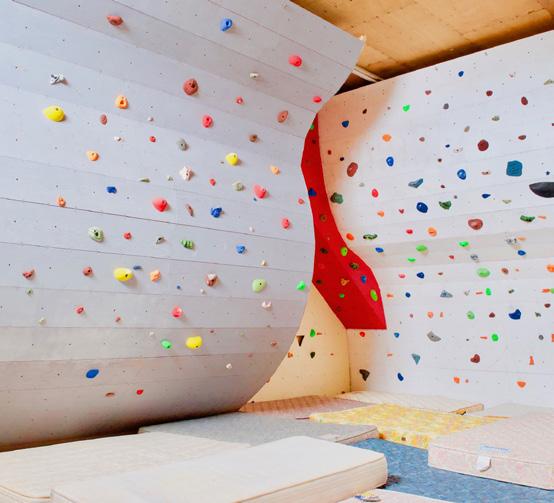


Kazemaru Trad. Japanese Stay Goshogawara City , Aomori Stay at this gorgeous traditional Japanese private house. We are interested in welcoming people from all over the world to show you how we do things in the rural side.








